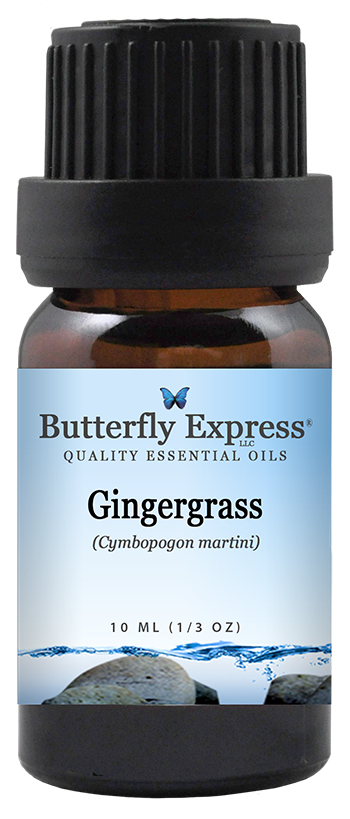Gingergrass
(Cympopogan martini variation sofia)
INGREDIENT IN: LeFortitude, LeIntensity, LePatches, LeTendaCare
THERAPEUTIC PROPERTIES: antiseptic, stimulant, stomachic, aphrodisiac, febrifuge, expectorant, analgesic, antidepressant, anti-inflammatory, tonic
AFFINITY FOR: circulation, muscles and joints, congestion
RESONANCE: physical, emotional
PLANT FAMILY: Gramineae
PART UTILIZED: leaves, grass
AROMATIC CONSIDERATIONS: Gingergrass is a close relative of Lemongrass and a distant cousin of Palmarosa. These family connections give a glimpse of its aroma. Gingergrass has a gentle, spicy aroma with marvelous earth tones. Just when you think you have experienced all the layers of the aroma, a hint of rose surfaces, calming the nerves and raising the spirits. I love Gingergrass.
APPLICATION: Dilute Gingergrass and apply to appropriate areas of the feet and anywhere on the body where it is needed. Gingergrass is wonderful added to the tub. You should use only one or two drops at a time.
EMOTIONAL - SPIRITUAL - MENTAL ASPECTS: The aroma of Gingergrass makes me want to smile and forget about petty annoyances. Gingergrass lifts the spirits and reduces feelings of being stressed to the limits of endurance. This oil is energizing in a mild and pleasant way. Gingergrass is said to be an aphrodisiac.
PHYSICAL ASPECTS: The main action of Gingergrass is on the circulation. It encourages blood flow to any area of the body to which it is applied. This action, and the anti-inflammatory properties of this essential oil, make it an excellent choice for massaging sore muscles and relieving stiffness in joints. Gingergrass, diluted and massaged in, is useful for headaches that originate in tense muscles in the neck or upper back.
Gingergrass is also used for colds and allergies to relieve sinus congestion and soothe the throat.
CAUTIONS: Gingergrass may cause irritation to sensitive skin if used undiluted.
©Copyright Butterfly Expressions 2020, 2021

